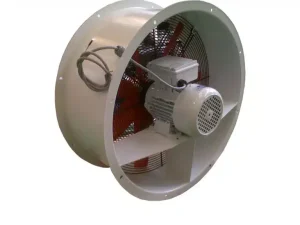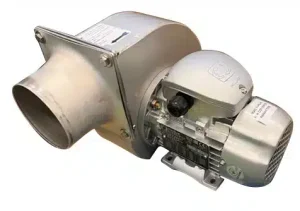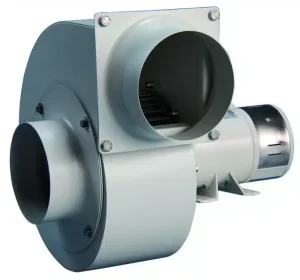Boat blowers, also known as fans or ventilators, are an essential component for any boat. These devices are particularly important for the engine room, as they not only provide the necessary air for combustion in internal combustion engines but also allow for air circulation to maintain an adequate temperature within the space. Moreover, they are commonly used for air extraction in other enclosed onboard areas, such as galleys and bathrooms.
There is a vast range of fans and boat blowers, depending on the size of the hull and the needs of shipyards and boat owners. Therefore, it is important to know how to choose the right blower and understand its most important features. We asked Andrea Corradi, owner of CEM, an Italian company that is a world leader in the production of boat fans and blowers, for some advice.
Types of boat fans and blowers
Boat blowers are primarily divided into two types: centrifugal fans and axial fans. These two types have completely different construction and performance characteristics. CEM models are available in both direct current (DC) and alternating current (AC) versions and are made with materials particularly suitable for marine environments, such as painted carbon steel and stainless steel.
- Centrifugal fans are typically used on small to medium-sized boats, usually up to 50 feet.
- Axial fans are generally used on boats over 50 feet and are widely applied on superyachts.

How to choose the best model
At this point, the calculation for selecting the most suitable model of boat fan or blower becomes complex. CEM’s CEO explains: “The volume of the engine room must be related to the thermal dissipation required, which derives from the amount of heat produced by the engine room. Based on these two factors, a certain value is calculated with respect to the outside temperature, with a variable ranging from 5°C to 10°C, and this is used to identify the most suitable boat blower model for a given hull”. In practice: given a certain engine room size in cubic meters, and aiming to ensure a minimum standard of at least thirty air exchanges per hour and an internal temperature not exceeding 35°C, the total thermal kilowatts produced by the components within the engine room must be calculated.

Since most of the air introduced into the engine room is necessary for combustion and excess heat extraction, the calculation for proper engine room ventilation must consider the air circulation and combustion requirements for the incoming air. On the other hand, the extraction air amount must be sufficient to dissipate the thermal kilowatts produced.
“Obviously, it’s generally better to ensure a bit more air rather than less, so as not to strain the engines – Corradi points out – In any case, we at CEM always assist shipyards in selecting the product that best meets their needs, guiding them through every step of the design process to achieve the correct ventilation sizing. This is a very important aspect of our work that often makes the difference, as not all our competitors can offer this engineering service, which requires specific know-how and substantial field experience. This is why our support and collaboration are highly appreciated by the technical departments of shipyards worldwide”.
Maintenance and Precautions
As far as the maintenance of boat blowers is concerned, Corradi emphasizes that “our products are designed, calibrated, tested, and certified in-house, so they require almost no maintenance. The only maintenance we always recommend concerns the fans equipped with direct current (DC) motors, which is to check the wear of the brushes”. For those unfamiliar, brushes are the components in a DC motor that transmit current from the onboard network to the motor’s rotor.

CEM blowers come with a two-year warranty, and for axial fans, the company offers RINA Type Approval certification for the marine sector, which will soon be available for centrifugal fans as well. Furthermore, CEM produces fans certified to ISO 8846 (Ignition Protection) and Explosion Proof standards, suitable for use in environments where there is a risk of explosion (such as battery compartments, tenders, etc.).





























